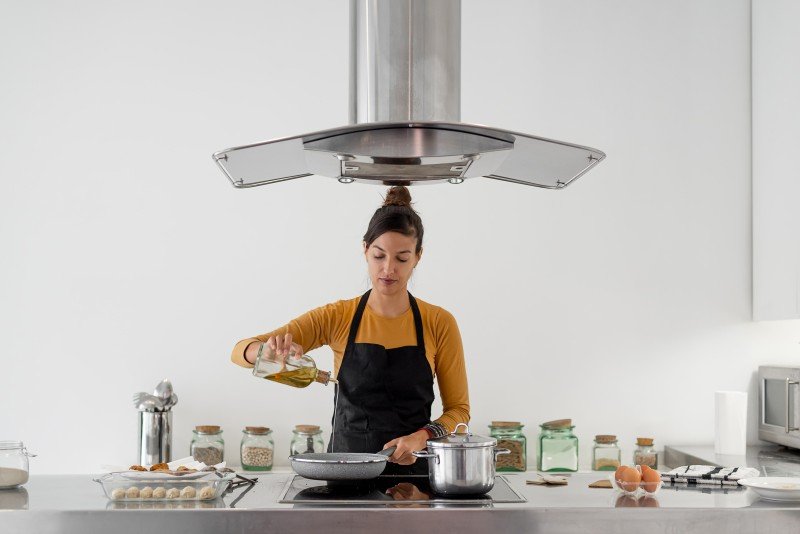The Complete Guide to Ovens and Hobs: Choosing the Right Appliances for Your Kitchen
When it comes to developing cooking masterpieces, the value of quality kitchen home appliances can not be overstated. Ovens and hobs are the heart of any kitchen, allowing home cooks and professional chefs alike to create, bake, and sauté tasty meals. Understanding the various types of ovens and hobs, together with their features and functionalities, is important for making informed buying choices. Click Link offers an extensive look at ovens and hobs, assisting you browse the choices available so that you can improve your kitchen's performance and flexibility.
Comprehending Ovens
Ovens are necessary for cooking and baking and been available in various types to satisfy varied cooking requirements. Here is an introduction of the most typical types of ovens:
1. Conventional Ovens
Standard ovens work by heating the air inside with gas or electric aspects. They are ideal for baking cakes, roasting meats, and cooking casseroles.
2. Convection Ovens
These ovens use a fan to flow hot air, providing an even temperature throughout, which can significantly reduce cooking times. They are perfect for baking cookies or roasting veggies.
3. Microwave Ovens
Microwaves cook food rapidly using electro-magnetic radiation. They are ideal for reheating leftovers or defrosting frozen foods but are not suitable for browning or crisping.
4. Wall Ovens
Integrating a wall oven into your kitchen style can save area and produce a streamlined aesthetic. They function much like standard or stoves however are built into the wall for easy gain access to.
5. Variety Ovens
These ovens combine stovetop burners with an oven, providing flexibility for those who prefer a single device for all cooking needs.
| Type | Cooking Method | Best For |
|---|---|---|
| Conventional | Electric/Gas | Baking, roasting |
| Convection | Air blood circulation | Quick cooking, even baking |
| Microwave | Electromagnetic | Reheating, defrosting |
| Wall Ovens | Electric/Gas | Space-saving, smooth design |
| Range Ovens | Electric/Gas | Versatile cooking |
Exploring Hobs
Hobs, likewise referred to as cooktops or stovetops, offer the surface to prepare pans straight over a heat source. Like ovens, hobs come in numerous types, which can be classified as follows:
1. Gas Hobs
These hobs utilize a flame for cooking and provide immediate heat control. They are preferred by numerous chefs for their responsiveness and accuracy.
2. Electric Hobs
Electric hobs use coils or flat surface areas to heat pans. They use a constant heat source, but they might take longer to cool off compared to gas hobs.
3. Induction Hobs
Induction hobs utilize electro-magnetic energy to heat pots and pans straight, making them highly efficient and quicker to cook. They are likewise easier to clean as the surface area stays reasonably cool.
4. Strong Plate Hobs
These are older technology that utilizes strong metal plates to supply heat. They are long lasting however are less effective than modern-day alternatives.
| Type | Heat Source | Benefits | Downsides |
|---|---|---|---|
| Gas Hobs | Flame | Instant heat control | Needs gas connection |
| Electric Hobs | Electric coils | Consistent heat | Slower to cool down |
| Induction Hobs | Electromagnetic | Fast cooking, energy-efficient | Needs suitable pots and pans |
| Solid Plate Hobs | Strong metal plate | Sturdiness | Less effective |
Picking the Right Appliances
Selecting the best oven and hob for your kitchen involves considering different elements:
1. Space and Layout
Procedure your kitchen area to determine the size and placement of the oven and hob. Ensure there is appropriate ventilation, specifically for gas appliances.
2. Cooking Style
Consider how often you cook and the kind of meals you prepare. A stove may fit passionate bakers, while someone who often stir-fries might prefer an induction hob.
3. Energy Source
Pick the energy source that best fits your way of life. Gas provides instant control, while electric and induction hobs offer ease of usage and are frequently more energy-efficient.
4. Spending plan
Identify your budget plan for kitchen appliances. Ovens and hobs differ considerably in rate, depending on features and brands. Prioritize necessary features that meet your requirements.
5. Functions
Search for performances such as self-cleaning options, smart innovation compatibility, specific rack setups for ovens, and safety functions for hobs.
Often Asked Questions (FAQs)
Q1: What is the distinction between a traditional oven and a convection oven?A1: Conventional ovens heat up the air within without fans, while stove utilize a fan to circulate hot air for more even cooking. Q2: Can I utilize aluminum cookware on induction hobs?A2: No, induction hobs require ferrous (magnetic )materials like cast iron or stainless-steel to work successfully. Q3: Do gas hobs heat faster than electric hobs?A3: Yes, gas hobs offer immediate heat, making them much faster for cooking compared to electric hobs. Q4: Is it safe to use a microwave oven?A4: Yes, when used according to the manufacturer's directions, microwave ovens are thought about safe for cooking.
Q5: How frequently should I clean my oven and hob?A5: For optimum efficiency, clean your oven routinely, specifically after spills. Hobs ought to be cleaned down after each use
to prevent buildup. Ovens and hobs
are essential elements of a well-equipped kitchen. Understanding the different types, their performances, and the factors to consider involved in acquiring
them can significantly boost cooking experiences. Whether one is a casual home cook or a professional chef, investing time in choosing the right devices can result in culinary success and complete satisfaction in the kitchen. By prioritizing functions that line up with your cooking style, energy sources that fit your home, and budget plan considerations, you can create an efficient work space that inspires culinary creativity.

